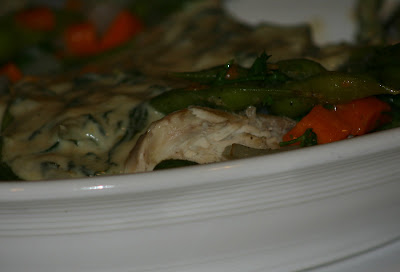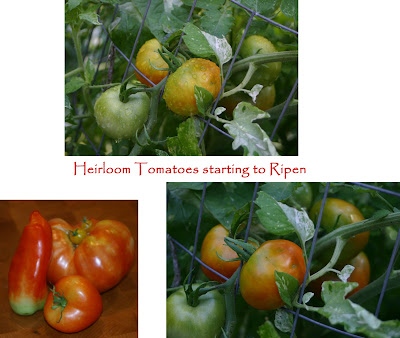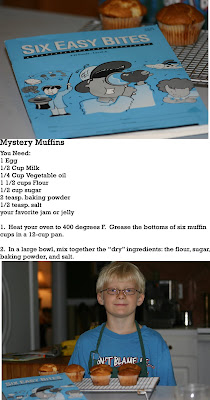
Here is another Great recipe from the Silver Palate Cook Book. I will be making this again. The Mustard and Basil made an interesting combination in the sauce.
1 roasting chicken (3 1/2 pounds)
1 bunch of fresh basil, washed carefully
51/2 cups chicken stock or canned chicken broth
1 cup coarsely chopped yellow onions
2 carrots, peeled and chopped
5 parsley sprigs
salt and pepper to taste
4 small white onions
4 new potatoes, scrubbed
4 medium sized carrots, peeled and cut inot 2 inch lengths
3/4 pounds fresh green beans, cleaned and tipped
6 Tablespoons unsalted butter
3 Tablespoons all-purpose flour
1/3 cup creme Frache or heavy cream
2 Tablespoons chopped fresh Italian parsley
1. Wash the chicken, pull off all the fat that can be removed, stuff the cavity with the basil, and truss. Set the chicken, breast side up, in a heavy saucepan just large enough to hold it comfortably. Pour in the chicken stock and bring to a moderate boil. Reduce the heat to a gentle simmer and skim any accumulated fat or scum.
2. Add the chopped onion, chopped carrots, and parsley sprigs and season lightly with salt and pepper. Partially cover, reduce heat, and cook at a gentle simmer until the chicken juices run a clear yellow when the thigh is pricked with a fork., 40 minutes.
3. Meanwhile bring a large pot of salted water to a boil and drop in the white onions. Simmer for 10 seconds, lift out with a slotted spoon, and drop into a large bowl of ice water. Next, add the potatoes and cook until tender but crisp, and then with the green beans. Reserve all the vegetables in the ice water.
4. When the chicken is done, remove it from its broth with a slotted spoon, cover and keep warm.
5. Measure out 2 cups of the chicken stock and bring it to a boil in a smaller saucepan. In another small pan melt 2 Tablespoons of butter over medium heat. When the butter is foaming, sprinkle in the flour, Cook without browning, stirring constantly. for about 5 minutes. Remove from heat and pour in the boiling chicken broth all at once. The sauce will bubble furiously for a minute. Whisk the sauce as it bubbles and subsides and then return it to low heat. Bring the sauce up to a boil, stirring constantly, and cook for 5 minutes.
6. Remove the basil from the chicken's cavity and chop it fine. Whisk in the basil, mustard, and creme frache or whipping cream into the sauce, remove the sauce from heat, cover, and keep warm.
7. Melt the remaining butter ( 4 Tablespoons ) in a skillet over low heat. Drain the blanched vegetables and warm them generously in the butter until hot through, no more than 5 minutes. Season lightly with salt and pepper. Sprinkle with the chopped parsley.
8. Carve the chicken into serving pieces and arrange on a platter. Surround the chicken with the warmed vegetables, spoon some of the sauce over the chicken, and offer the remaining sauce on the side. serve immediately.
4 portions











